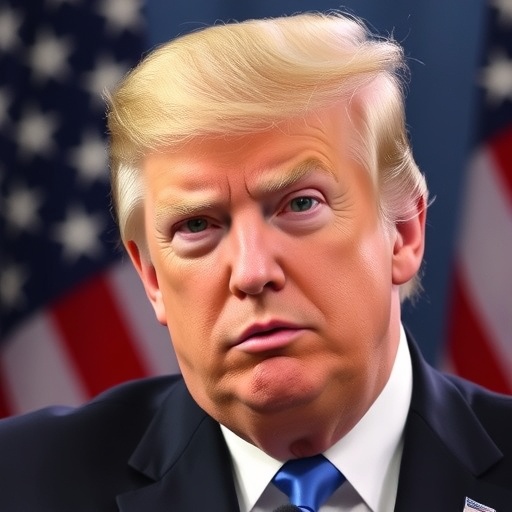Government Shutdowns: From Enforcing Federal Law to Trump’s Tool for Expanding Executive Power
In a dramatic shift that’s reshaping the corridors of power in Washington, government shutdowns—once a mechanism strictly for upholding federal law—are now being wielded by former President Donald Trump as a bold instrument to amplify executive power. This evolution, highlighted by the longest shutdown in U.S. history during Trump’s tenure, has sparked fierce debates about the erosion of checks and balances, leaving federal workers in limbo and national priorities at risk.
- Historical Roots: Shutdowns as Guardians of Federal Law Compliance
- Trump’s Pivot: Weaponizing Shutdowns for Border Wall and Beyond
- Economic and Human Toll: Federal Workers Caught in the Crossfire
- Legal Battles and Congressional Pushback: Testing Washington’s Balance
- Looking Ahead: Shutdowns’ Role in Future Executive Power Dynamics
The 2018-2019 shutdown, lasting a record 35 days from December 22, 2018, to January 25, 2019, exemplified this transformation. Triggered by Trump’s demand for $5.7 billion in funding for a border wall, it furloughed 800,000 federal employees and halted services across agencies. What began as a standoff over immigration policy quickly morphed into a high-stakes gamble on presidential authority, with Trump declaring a national emergency to redirect funds—a move that bypassed Congress and ignited legal battles still echoing today.
Experts warn that this tactic not only inverts the original intent of shutdowns but also sets a perilous precedent for future administrations. As one constitutional scholar noted, ‘Shutdowns were meant to enforce accountability under federal law, not to unilaterally expand executive reach.’ With Trump eyeing a potential 2024 return, the implications for Washington’s delicate power equilibrium are more urgent than ever.
Historical Roots: Shutdowns as Guardians of Federal Law Compliance
Government shutdowns trace their origins to the 1970s, emerging as a procedural byproduct of the 1974 Congressional Budget and Impoundment Control Act. This legislation was designed to prevent presidents from withholding congressionally appropriated funds, ensuring strict adherence to federal law. The first notable shutdown occurred in 1976 under President Gerald Ford, lasting mere hours over a spending bill dispute, but it underscored the mechanism’s role as a temporary enforcement tool rather than a weapon of political warfare.
By the 1980s and 1990s, shutdowns had become more frequent, often tied to partisan battles over budgets. The 1995-1996 shutdowns under President Bill Clinton, totaling 21 days, were pivotal. They arose when Clinton vetoed Republican-led spending cuts, leading to lapses in appropriations. At the time, these events were framed as necessary pauses to compel compliance with federal law—ensuring that expenditures aligned with congressional intent. Federal agencies were required to prioritize ‘essential’ functions, like national security and public safety, while non-essential operations ground to a halt.
Statistics from the U.S. Government Accountability Office (GAO) reveal that between 1977 and 2017, there were 18 shutdowns totaling about 100 days. None exceeded 21 days until Trump’s era. During these periods, the focus remained on legal fidelity: agencies like the IRS and National Parks Service operated under contingency plans to minimize disruption, all while Congress raced to restore funding. ‘The shutdown was never about power grabs; it was about the law’s supremacy over expediency,’ explained historian Julian Zelizer in a 2019 interview with NPR.
This historical context highlights how shutdowns served as a democratic safeguard, forcing Washington lawmakers to negotiate within the bounds of federal law. Yet, as fiscal deadlines loomed more predictably after the 1990s budget reforms, the stage was set for their politicization—a shift that accelerated dramatically under Trump.
Trump’s Pivot: Weaponizing Shutdowns for Border Wall and Beyond
Donald Trump’s approach to government shutdowns marked a seismic departure, transforming them from reluctant necessities into strategic levers for executive power. His first brush with this tactic came in 2018, amid heated negotiations over the Consolidated Appropriations Act. Insisting on wall funding as a non-negotiable condition for avoiding a shutdown, Trump tweeted on December 20, 2018: ‘I am proud to shut down the government for border security.’ This stance, rooted in his campaign promise of a ‘big, beautiful wall,’ escalated a routine budget debate into a prolonged crisis.
The resulting 35-day impasse cost the economy an estimated $11 billion in lost productivity, according to a 2019 CBO report, with federal workers facing delayed paychecks and contractors absorbing massive losses. Trump’s administration justified the shutdown by arguing it enforced federal law on immigration enforcement, citing statutes like the Immigration and Nationality Act. However, critics, including Senate Minority Leader Chuck Schumer, decried it as a ‘manufactured crisis’ designed to consolidate power. Schumer stated in a floor speech, ‘This isn’t about law—it’s about one man’s agenda overriding the will of the people.’
Beyond the wall, Trump’s use of shutdown threats extended to other arenas. In 2019, he briefly shut down the government again over similar demands, and his threats persisted into 2020 budget talks. This pattern revealed a broader strategy: leveraging the shutdown’s disruptive potential to extract concessions, thereby expanding executive influence. Legal scholars point to Trump’s invocation of the National Emergencies Act in February 2019, which allowed him to reprogram $8 billion in military funds for the wall without congressional approval. This maneuver, challenged in over 100 lawsuits, was partially upheld by the Supreme Court in 2021, raising alarms about the unchecked growth of executive power.
In Washington, this tactic polarized the landscape. Republicans largely backed Trump’s hardline stance, viewing it as fulfilling voter mandates, while Democrats accused him of flouting federal law’s collaborative spirit. A Pew Research Center poll from January 2019 showed 47% of Americans blaming Trump for the shutdown, underscoring its political toll even as it bolstered his base.
Economic and Human Toll: Federal Workers Caught in the Crossfire
The human cost of Trump’s shutdown strategy painted a stark picture of how these events, once brief legal interludes, had become protracted ordeals under his watch. During the 2018-2019 shutdown, over 800,000 federal employees were furloughed or worked without pay, affecting agencies from the Department of Homeland Security to the Smithsonian Institution. Stories of hardship flooded the news: TSA agents calling in sick due to financial strain, Coast Guard families relying on food banks, and Smithsonian researchers losing irreplaceable data.
Economically, the fallout was staggering. The American Action Forum estimated daily losses at $160 million, totaling over $5.6 billion for the full duration. Small businesses near national parks, like those in Yosemite, reported 90% revenue drops, per a U.S. Travel Association study. Federal law mandates back pay for essential workers post-shutdown, but the immediate uncertainty exacerbated mental health issues; a 2019 Government Executive survey found 40% of affected employees experienced heightened anxiety.
Trump defended the approach, claiming in a Rose Garden address that ‘the wall is being built’ through the crisis, tying it to national security imperatives under federal law. Yet, even allies like then-Senate Majority Leader Mitch McConnell urged restraint, warning of ‘unintended consequences’ in a private call reported by The New York Times. The shutdown’s legacy includes bipartisan legislation in 2021, the Government Employee Fairness Act, which aimed to provide earlier paycheck guarantees, but it fell short of addressing the root politicization.
In Washington, these impacts fueled calls for reform. Bipartisan groups, including the Fix the Debt coalition, advocated for automatic continuing resolutions to avert shutdowns, arguing they undermine federal law’s stability. As one furloughed worker told CNN, ‘We’re not pawns in a power game—we enforce the laws that keep this country running.’
Legal Battles and Congressional Pushback: Testing Washington’s Balance
Trump’s shutdown tactics ignited a flurry of legal challenges, exposing fractures in Washington’s power structure. The border wall emergency declaration faced immediate lawsuits from states like California and advocacy groups such as the Sierra Club, alleging violations of federal law’s appropriation clauses. Federal courts issued mixed rulings: a Texas judge blocked parts in 2019, while the Supreme Court’s 5-4 decision in Trump v. Sierra Club allowed construction to proceed, citing deference to executive authority in emergencies.
Congressional response was equally divided. House Democrats, regaining control in 2019, passed bills to terminate the emergency, only for them to stall in the Republican Senate. Speaker Nancy Pelosi remarked, ‘The president’s shutdown is an assault on the Constitution, expanding executive power at democracy’s expense.’ This impasse highlighted how shutdowns, originally tools for enforcing federal law, now enabled circumvention of it.
Broader implications emerged in oversight hearings. The House Oversight Committee grilled Trump officials on fund diversions, revealing $3.6 billion from military projects—a move decried by Defense Secretary Mark Esper as risky. Statistics from the Congressional Research Service show Trump’s era saw three shutdowns or threats, compared to two full ones in the prior two decades, signaling a normalization of executive brinkmanship.
In Washington, think tanks like the Brookings Institution warned of ‘shutdown fatigue,’ with polls indicating 70% public support for ending the practice altogether. Bipartisan efforts, such as the 2023 debt ceiling deal incorporating shutdown safeguards, reflect growing consensus that unchecked executive power threatens federal law’s integrity.
Looking Ahead: Shutdowns’ Role in Future Executive Power Dynamics
As Donald Trump campaigns for 2024, the specter of renewed shutdowns looms large, potentially reshaping executive power in profound ways. With Republicans eyeing House and Senate majorities, analysts predict Trump could revive wall funding demands or extend tactics to issues like election integrity and trade. A potential second term might see expanded use of emergency powers, building on precedents set during his first administration.
Reform proposals are gaining traction. The Shutdown Prevention Act, introduced in 2022 by Senators Susan Collins and Joe Manchin, would trigger automatic funding extensions during disputes, preserving federal law’s enforcement without disruption. Legal experts, including those from the American Bar Association, urge Supreme Court clarification on emergency declarations to curb executive overreach.
Economically, the stakes are higher amid inflation and recovery challenges. A 2023 Moody’s Analytics report projects a single shutdown could shave 0.2% off GDP growth, amplifying vulnerabilities in supply chains and federal services. Public sentiment, per Gallup, shows 62% opposition to using shutdowns for policy goals, pressuring Washington to innovate.
Ultimately, the evolution from legal enforcer to power tool underscores a pivotal question: Will future leaders restore shutdowns’ original purpose, or will they become fixtures in executive arsenals? With Trump’s influence enduring, the battle for balanced governance in Washington intensifies, demanding vigilance to safeguard democracy’s foundational laws.








